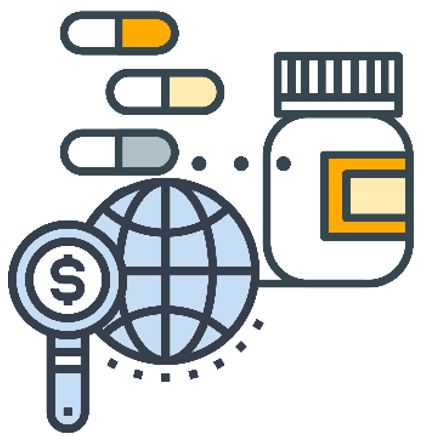Reformulation & indication expansion - lifecycle management led by Roche, AZ, BI & Celltrion

COVID-19 Vaccine – Progress across various global candidates

| Company | Collaborator/ Funder | Nature of the collaboration |
| Moderna | Biomedical Advanced Research and Development Authority (BARDA) | Agreement to fund an additional USD 472 in addition to the initial USD 483 million. |
| Laboratorios Farmacéuticos Rovi | Collaboration for large-scale, commercial fill-finish manufacturing of Moderna’s mRNA vaccine candidate in Madrid, Spain to supply in markets outside the US. As part of the agreement, Rovi will provide packaging capacity and vial filling through procurement of a new production line and equipment. | |
| AstraZeneca | Emergent Biosolutions | Large-scale commercial manufacturing of AstraZeneca’s Vaccine candidate AZD1222. The Agreement is valued at USD 174 million and follows a prior contract for development service valued at USD 87 million |
| Novavax | FUJIFILM Diosynth Biotechnologies | Collaboration to manufacture Novavax’s COVID-19 candidate NVX-CoV2373 for Phase 3 clinical trial and additional 100 million doses by late 2020 |
| FujiFilm Diosynth Biotechnolgoies | Biomedical Advanced Research and Development Authority (BARDA) | USD 265 million funds under the Operation Warp Speed, and to reserve capacity for vaccine manufacturing in Fujifilm’s Texas Plant |
| GSK | Medicago | Collaboration to develop and evaluate Medicago’s Coronavirus Virus-Like Particles (CoVLP) vaccine and manufacture of 100 million doses by 2021 end |
| BioNTech | UK government | Agreement to supply of 30 million doses as part of the agreement with the UK government |
| US Government | Order of 100 million doses for USD 1.95 billion by the U.S. Government and can expand to upto 500 million doses |
Sathguru Foot Print
Announcing the beta launch of
 We promise to deliver timely & critical insights across the spectrum of pharma & biotech.
Signup for updates
We promise to deliver timely & critical insights across the spectrum of pharma & biotech.
Signup for updates
- Upcoming: PE Investments in Healthcare – A Freewheeling Conversation | 24 August, 2020 4.30 PM IST. Register Now
Follow PharmForward insights on Global Biopharma Development
Connect with Authors at: E-mail healthcare@sathguru.com
 Grow Beyond
Grow Beyond 

